 |
Frisco Paint Shop:
|
 |
The material that first appeared in FMIG Issue 46 in December 1986 has been updated. This column will deal with the paint schemes of the ALCo road switchers. The RS1s and RS2s appeared in three basic Frisco paint schemes with variations. Beginning in the late 1950s, they began being repainted in simplified paint schemes. Some units over the years appeared in one or more varieties of each of these schemes. This column will attempt to document each paint scheme by unit. The RS1s also appeared in a scheme for the Alabama, Tennessee, and Northern (AT&N), their original owner. Upon takeover of the AT&N, these units received Frisco lettering with AT&N sublettering on the side of the cab. |
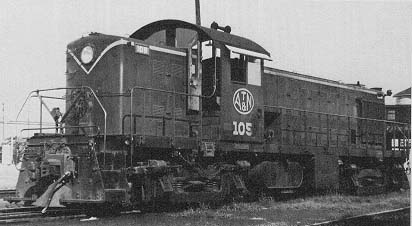 |
| Figure 1. Alabama, Tennessee, and Northern 105 is shown here in its origin paint. |
The RS1s and RS2s appeared in two black and yellow schemes with variations, while the RS2s also appeared in Mandarin orange and white (to the knowledge of the editor, the RS1s never received the orange and white scheme). The differences between the black and yellow schemes all involve changes in the striping patterns. Paint Schemes: FR-RS1a |
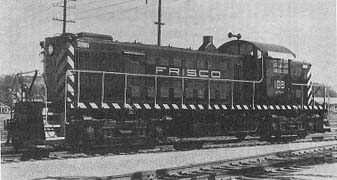 |
|
Frisco Photo
|
| Figure 2. Frisco 108 appears here in FR-RS1a. The unit received AT&N sublettering under the cab number when they were repainted into Frisco colors. |
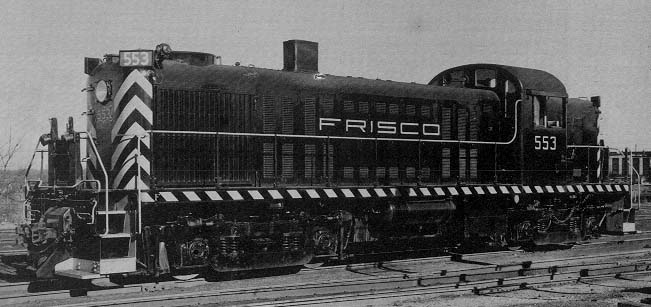 |
|
Frisco Photo
|
| Figure 3. RS2 553 is shown here in FR-RS1a at Springfield, MO, Dec. 9, 1949. |
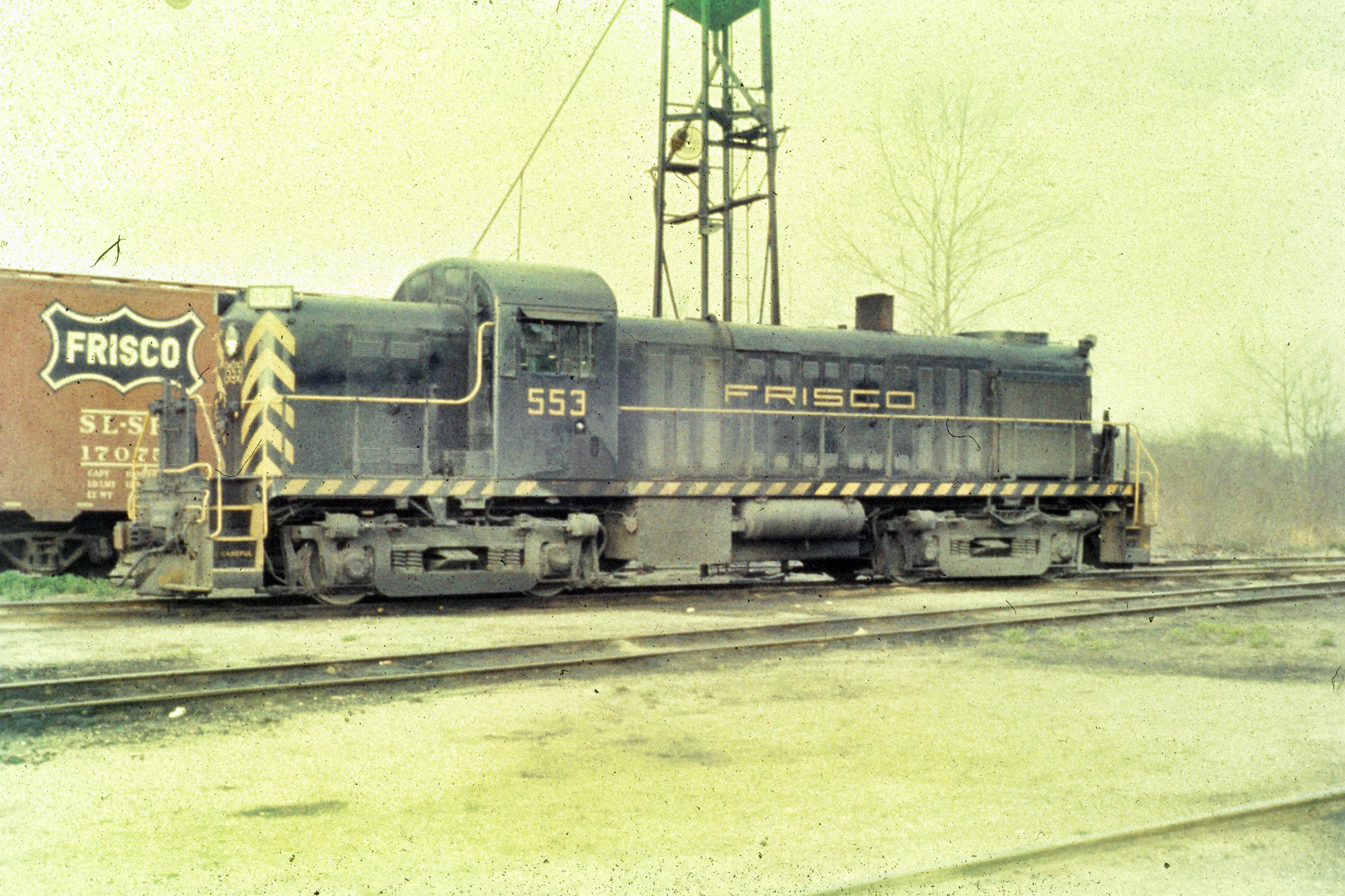 |
|
Frisco Photo
|
| Figure 4. RS2 553 is shown here in FR-RS1a at Springfield, MO, Dec. 9, 1949. |
| FR-RS1b This scheme was the same as FR-RS1a except that the lettering and the top stripe on the hood ends were done in Scotchlite. It appears that the Scotchlite was simply applied over the top of the painted lettering and stripes to increase nighttime visibility of the basically black units. Era: Early 1952 - ?. Applications: RS1s: 102 and 109 and RS2s: 554. |
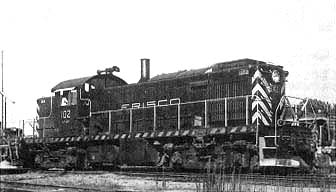 |
|
Louis A. Marre Collection
|
| Figure 5. RS1 102 appears here in FR-RS1b in St. Louis, MO in July 1959. |
 |
|
Gordon B. Mott |
| Figure 6. RS2 554 appears in FR-RS1b in this Nov. 30, 1958 view outside of the West Shops, Springfield, MO. |
| FR-RS1c This scheme was the same as FR-RS1b except that the unit number on the end of the hood appeared without the coonskin outline, and the number of the frame stripes was reduced. Era: ? Applications: RS1s: 101, 107, and 111. |
 |
|
Louis A. Marre |
| Figure 7. RS1 #111 is shown here in FR-RS1c as it switches the yard in Springdale, AR July 11, 1963. |
| FR-RS1d This scheme was the same as FR-RS1b except that a Frisco coonskin herald appeared above the unit number, below the headlight, on the end of the unit. This appears to have been an experiment, on one unit, and may have been the first black and yellow road switcher painted. (I have classified this as a variation lower in rank due to the GP7 article appearing first.) Era: Early 1950. Applications: RS2: 550. |
 |
| Figure 8. RS2 550 appears here in FR-RS1d. |
FR-RS2a FR-RS2b |
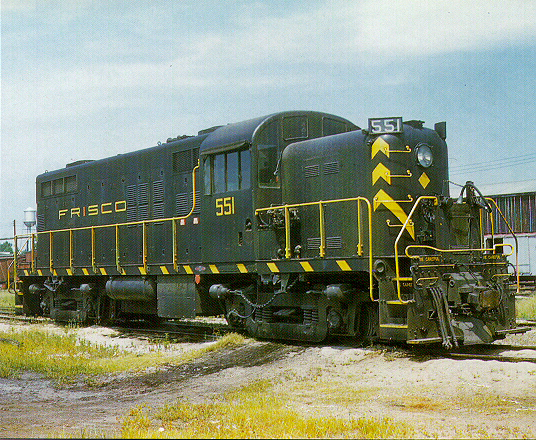 |
|
Frisco in Color |
| Figure 9. RS2 repowered 551 is shown here in Ft. Smith, AR, July 1961 appears in FR-RS2b. |
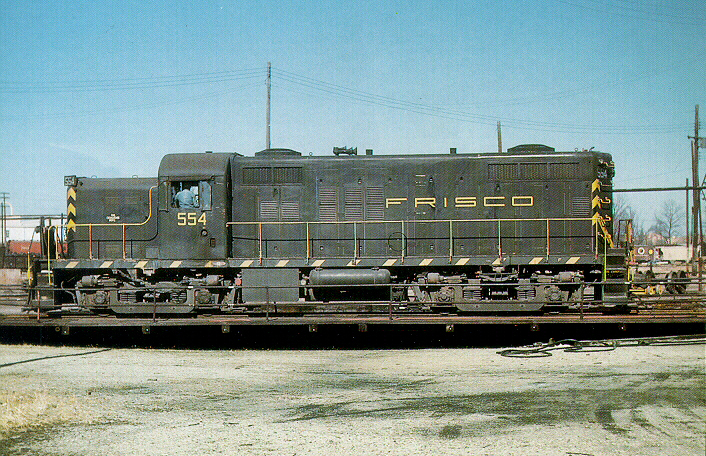 |
Frisco in Color |
| Figure 10. Repowered RS2 554 is riding the Ft. Smith turntable in this view of FR-RS2b taken in January 1963. |
| FR-RS2c This is one of the RS1 variations on scheme FR-RS2. Four end stripes were used instead of three on other FR-RS2 varieties. Under the headlight, the unit number appeared inside the coonskin outline instead of the diamond, normal for FR-RS2. Era: 1959-? Application: RS1: 109. |
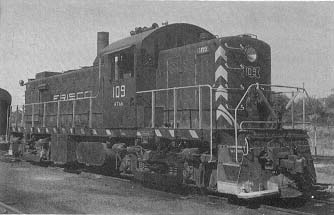 |
Louis A. Marre Collection |
| Figure 11. RS1 109 is shown here in FR-RS2c at Springfield, MO on Oct. 16, 1963. |
| FR-RS2d This is another of the RS1 variations on the scheme FR-RS2. It is the same as FR-RS2c except that the coonskin outline does not appear around the unit number. As such it is a simplification of scheme FR-RS1c. Era: 1959-? Application: RS1: 107. |
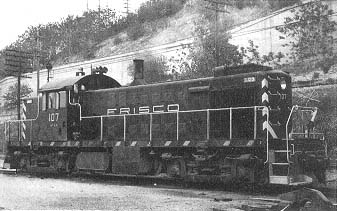 |
| Figure 12. RS1 107 shows off FR-RS2d in this view at Kansas City, MO on May 9,1966. |
FR-RS3a FR-RS3b FR-RS4a FR-RS4b |
 |
Frisco in Color |
| Figure 13. RS2 553 appears in FR-RS4b in this November 1970 view. |
FR-RS4c Data from the roster provided by the following sources: Errors in this roster are the sole responsibility of its author. |